V.F.A. WATCH Launch of the specially adjusted watch, V.F.A.
V.F.A. stands for "Very Fine Adjusted" and, as the name implies, its distinguishing characteristic was its high precision. With it, the Grand Seiko team achieved an accuracy that far exceeded that required by any chronometer certification. Furthermore, the testing program was more demanding than that of any recognized authority. Accuracy tests were conducted in six positions. The GS standard at that time was set at +5 to -3 seconds per day, but V.F.A. achieved an astonishing rate of +/-1 minute per month, a level unprecedented for any mechanical wristwatch. The movements, Caliber 6185 and 6186 (automatic winding) and Caliber 4580 (manual winding), were assembled and specially adjusted under extremely strict conditions by selected dedicated craftsmen and women.
It is interesting to look back upon the pressures faced by the Grand Seiko team at this time. The 1960’s saw perhaps the most important and rapid development in watchmaking for a century or more. The quality, performance and functionality of mechanical watchmaking were all progressing apace and ever-improving manufacturing techniques made high quality watches available at ever more accessible prices. For example, take the Seiko Sportsmatic 5, which was launched in 1963. It was priced at less than one third of the price of most Grand Seiko watches and yet, within a very short time, had earned a high reputation as a very reliable watch that ordinary people could afford. In 1968, when the initial monthly salary of a national government employee in Japan was just 25,000 yen, the automatic winding 61GS was priced at 37,000 yen and above. Furthermore, in 1969, the very same year as the launch of V.F.A., Seiko released the Quartz Astron, the world's first quartz watch and started the quartz revolution that, in just a few years, brought high precision watches within the reach of all.
So, to be of relevance to this fast changing market, the Grand Seiko team had to create a truly exceptional watch and it was this that spurred them on to create the V.F.A with its unprecedented level of accuracy. Within just nine years of its birth in 1960, Grand Seiko had climbed to the pinnacle of high precision mechanical watchmaking.
V.F.A. stands for "Very Fine Adjusted" and, as the name implies, its distinguishing characteristic was its high precision. With it, the Grand Seiko team achieved an accuracy that far exceeded that required by any chronometer certification. Furthermore, the testing program was more demanding than that of any recognized authority. Accuracy tests were conducted in six positions. The GS standard at that time was set at +5 to -3 seconds per day, but V.F.A. achieved an astonishing rate of +/-1 minute per month, a level unprecedented for any mechanical wristwatch. The movements, Caliber 6185 and 6186 (automatic winding) and Caliber 4580 (manual winding), were assembled and specially adjusted under extremely strict conditions by selected dedicated craftsmen and women.
It is interesting to look back upon the pressures faced by the Grand Seiko team at this time. The 1960’s saw perhaps the most important and rapid development in watchmaking for a century or more. The quality, performance and functionality of mechanical watchmaking were all progressing apace and ever-improving manufacturing techniques made high quality watches available at ever more accessible prices. For example, take the Seiko Sportsmatic 5, which was launched in 1963. It was priced at less than one third of the price of most Grand Seiko watches and yet, within a very short time, had earned a high reputation as a very reliable watch that ordinary people could afford. In 1968, when the initial monthly salary of a national government employee in Japan was just 25,000 yen, the automatic winding 61GS was priced at 37,000 yen and above. Furthermore, in 1969, the very same year as the launch of V.F.A., Seiko released the Quartz Astron, the world's first quartz watch and started the quartz revolution that, in just a few years, brought high precision watches within the reach of all.
So, to be of relevance to this fast changing market, the Grand Seiko team had to create a truly exceptional watch and it was this that spurred them on to create the V.F.A with its unprecedented level of accuracy. Within just nine years of its birth in 1960, Grand Seiko had climbed to the pinnacle of high precision mechanical watchmaking.
Read More
V.F.A. mechanical wrist watches appearing one after another.
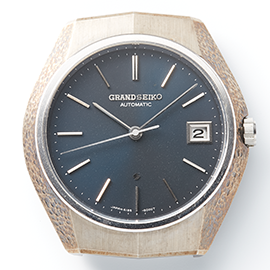
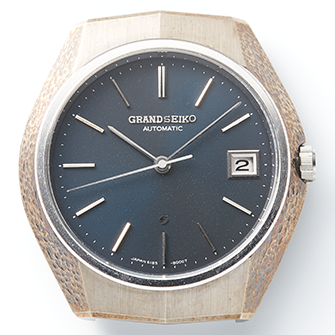
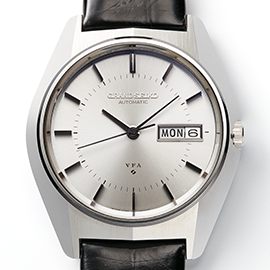
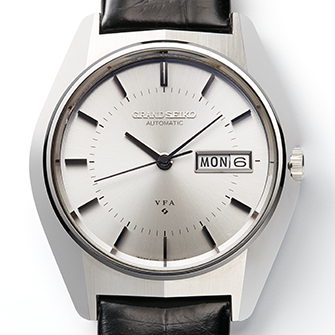
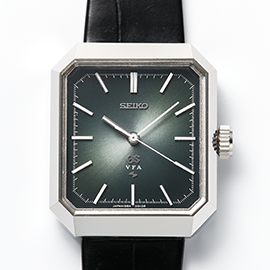
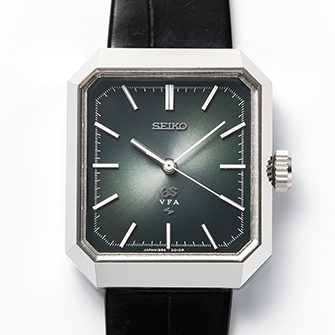
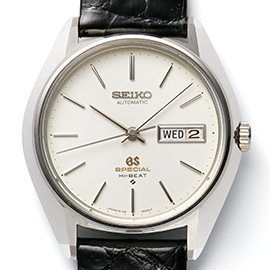
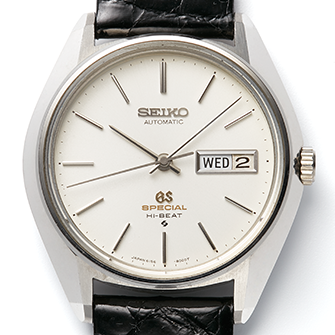
Grand Seiko Inspection Standard
| 1970 GS Standard Inspection * (extract) |
Current GS Standard Inspection* (extract) |
|||
|---|---|---|---|---|
| GS 3A class | GS 2A class | Special standard | Standard | |
| Mean daily rate (sec./day) | -3.0~+3.0 | -3.0~+5.0 | -2.0~+4.0 | -3.0~+5.0 |
| Mean variation of daily rate (sec/day) | 1.8 or less | 2.0 or less | 1.6 or less | 1.8 or less |
| Maximum daily rate between two consecutive daily rates in the same position (sec/day) | 4.0 or less | 5.0 or less | 3.0 or less | 4.0 or less |
| Maximum daily rate between mean daily rate and any individual rate (sec/day) | 7.0 or less | 8.0 or less | 7.0 or less | 8.0 or less |
| Validation of daily rate per 1℃ (sec/day/℃) | -0.3~+0.3 | -0.5~+0.5 | -0.3~+0.3 | -0.5~+0.5 |
| Positions | 5 | 5 | 6 | 6 |
| Days of inspection | 15 | 15 | 17 | 17 |
| 1970 GS Standard Inspection * (extract) |
||
|---|---|---|
| GS 3A class | GS 2A class | |
| Mean daily rate (sec./day) | -3.0~+3.0 | -3.0~+5.0 |
| Mean variation of daily rate (sec/day) | 1.8 or less | 2.0 or less |
| Maximum daily rate between two consecutive daily rates in the same position (sec/day) | 4.0 or less | 5.0 or less |
| Maximum daily rate between mean daily rate and any individual rate (sec/day) | 7.0 or less | 8.0 or less |
| Validation of daily rate per 1℃ (sec/day/℃) | -0.3~+0.3 | -0.5~+0.5 |
| Positions | 5 | 5 |
| Days of inspection | 15 | 15 |
| Current GS Standard Inspection* (extract) |
||
|---|---|---|
| Special standard | Standard | |
| Mean daily rate (sec./day) | -2.0~+4.0 | -3.0~+5.0 |
| Mean variation of daily rate (sec/day) | 1.6 or less | 1.8 or less |
| Maximum daily rate between two consecutive daily rates in the same position (sec/day) | 3.0 or less | 4.0 or less |
| Maximum daily rate between mean daily rate and any individual rate (sec/day) | 7.0 or less | 8.0 or less |
| Validation of daily rate per 1℃ (sec/day/℃) | -0.3~+0.3 | -0.5~+0.5 |
| Positions | 6 | 6 |
| Days of inspection | 17 | 17 |
The assembled movement underwent a precision inspection that took over two weeks. Seiko categorized the movements into classes according to their accuracy. Even at that time in 1970, in order to pass the standards for the GS 2A class (a conventional Grand Seiko), the rate had to be within +5 to -3 seconds per day. Movements that underwent special adjustments to achieve higher accuracy were placed in high end models.
